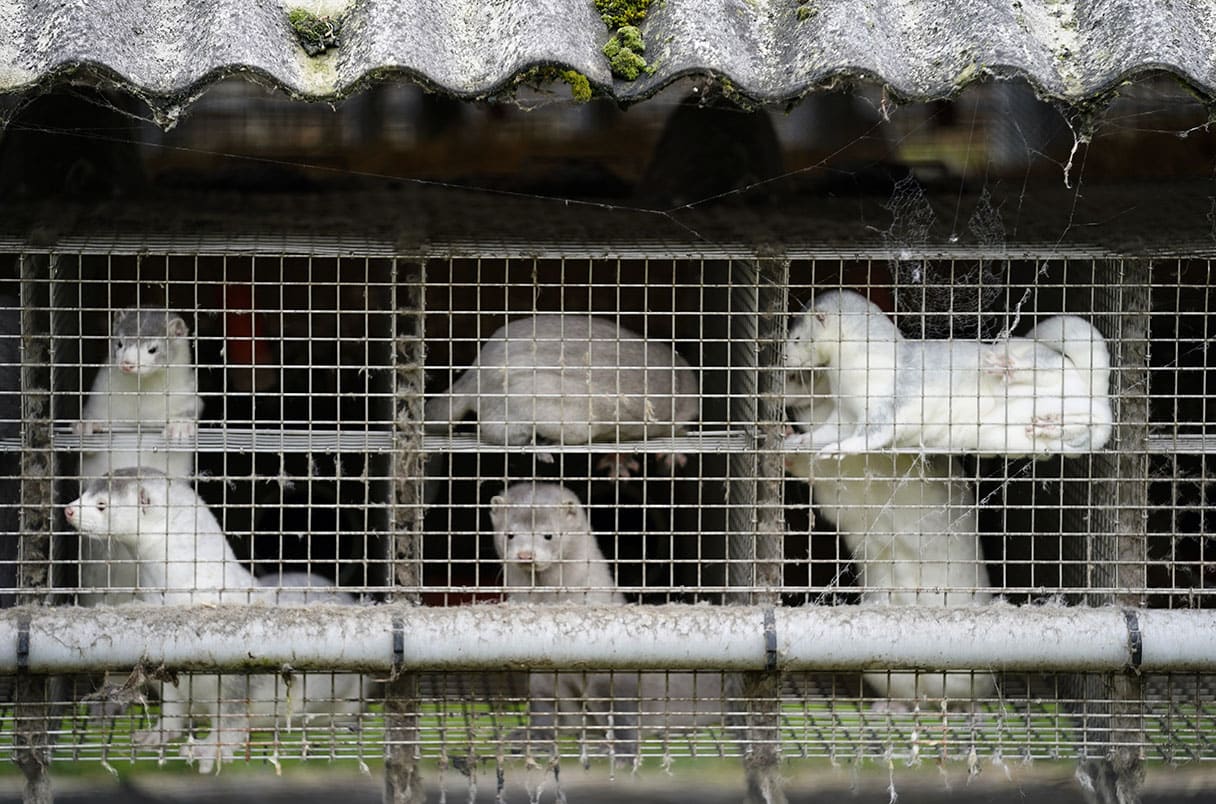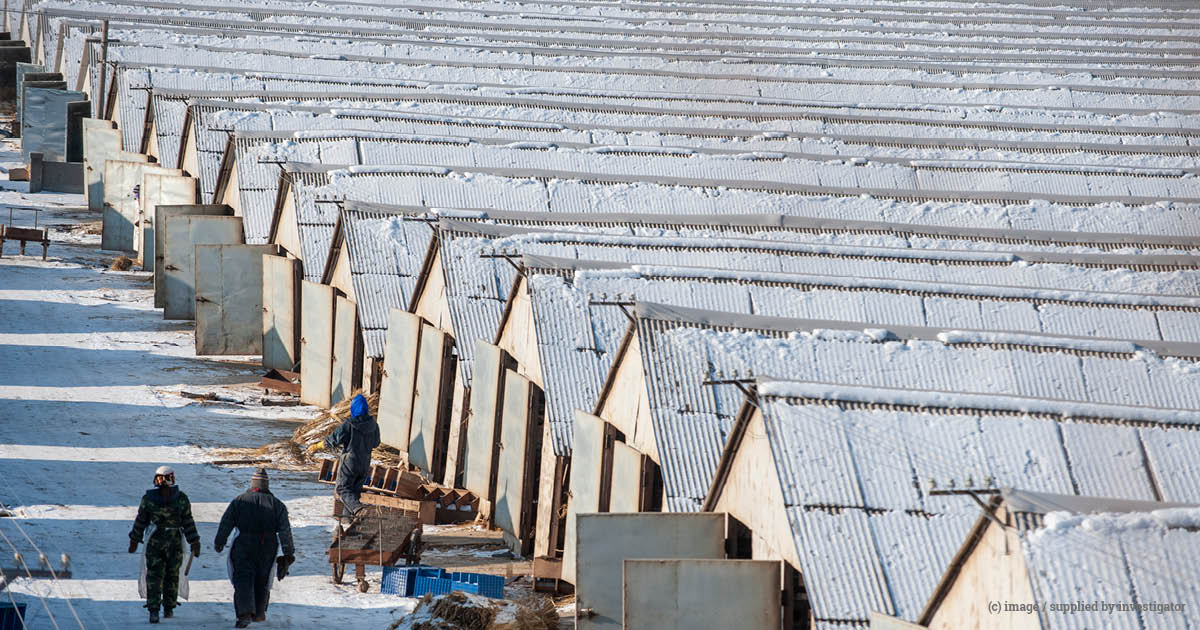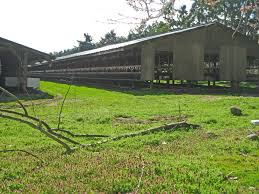Pandemic Prediction Checklist: H5N1 (6/14)
By DirectedEvolution @ 2023-02-05T14:56 (+70)

Changelog available at bottom of post.
Here's what we can do about it:
Five ways to stop a bird->mink->human H5N1 pandemic
Overall score: 5/14
- Transmissibility: H5N1 is bird flu. It can jump from birds to mammals but doesn't spread much if at all between humans. The new scary prospect is mink-to-mink spread at a Spanish mink farm in October 2022, a potential harbinger of human-to-human spread. If that happened and H5N1 remained just as deadly, it would be a civilization-threatening global catastrophe.
- Danger: H5N1 is deadly and targets working-age people. Our vaccines are in short supply and used infrequently. Antivirals and vaccines have uncertain efficacy.
- Spread limitations: H5N1 is global now and there's no big demographic protective factor except not working with poultry.
- Social effects: Zeynep Tufekci's op-ed calls for change, but change hasn't happened yet.
Note: if you haven't read news on the subject, the two articles linked here are a great starting point.
What is a pandemic prediction checklist?
I write these when a front-page news article raises the prospect of a new pandemic threat. This list collects what I think are the major risk factors for a pandemic. The point is not to predict what will happen, but to create a quantitative metric to track of how serious current conditions are.
I back-tested them on ancient and modern pandemics, such as the black death, various 20th century flu outbreaks, HIV, ebola, and COVID-19. COVID-19 scored a 13/14 during the worst days, but was limited by the fact that it targeted the elderly, meaning that the economy and healthcare system still had a healthy workforce.
Special section: mink farms
Virologists warn that H5N1, now rampaging through birds around the world, could invade other mink farms and become still more transmissible.
“This is incredibly concerning,” says Tom Peacock, a virologist at Imperial College London. “This is a clear mechanism for an H5 pandemic to start.” Isabella Monne, a veterinary researcher at the European Union’s Reference Laboratory for Avian Influenza in Italy, where the samples from Spain were sequenced, calls the finding “a warning bell.”
- Science
There are about 120 mink farms in the US producing 2 million pelts per year. Minks are killed at 6 months, so this suggests 1 million farmed minks in the USA.
50 million minks were produced annually as of 2020, primarily in China, Denmark, and Poland [Netherlands has phased out production since this article was written].
If there are roughly 120 mink farms per million farmed minks, this suggests a global total of around 6,000 mink farms spread across multiple continents.
COVID-19 affected over 450 mink farms, showing that mink farms are vulnerable targets to a disease capable of targeting minks.
Some mink farms appear to be enclosed, which may limit mink-bird contact:

Other mink farms appear to be open-air, where minks might be able to pull birds into their cages or otherwise come into close contact with infected birds:

The checklist
Transmissibility: efficiency, intra-community spread, inter-community spread, outside view
1. TRANSMISSION ROUTE: is there an efficient transmission route, such as respiratory droplets, airborne transmission or via the bites of common jumping or flying insects?
No.
- The disease appears to have spread among minks at a Spanish fur farm, and the mink's upper respiratory tract apparently makes it an effective way to transmit the disease to humans. However, it's not yet shown to be spreading efficiently among humans, or with greater efficiency from animals to humans, so we'll leave this as a "no" for now. H5N1 has been able to infect cats, pigs and tigers, bears, dolphins and porpoises, so although mink may be an especially concerning target, it's not the first non-human mammalian target of H5N1.
- Tufecki: To become easily human-transmissible, the virus would need to mutate to infect upper respiratory tract receptors in humans, rather than settling deep in the lung.
2. RAPID SPREAD: Does it seem to spread rapidly within affected communities, going from a few cases to a major local emergency within a month? If R0 has been credibly estimated, is the mean of the range higher than 1?
No.
- ECDPC says H5N1 has only developed "limited clusters of human cases."
3. GLOBAL SPREAD: Has it achieved community spread in non-endemic countries on at least 3 continents, and in a set of countries comprising 15% of the world population (excluding endemic countries) and a total of 15% of world GDP?
No.
- H5N1 has popped up sporadically throughout the world, but not in simultaneous community spread characteristic of an oncoming pandemic. Per the WHO, "Globally, from January 2003 to 25 November 2022, there have been 868 cases of human infection with avian influenza A(H5N1) virus reported from 21 countries. Of these 868 cases, 457 were fatal (CFR of 53%)."
- "Whenever avian influenza viruses are circulating in poultry, there is a risk for sporadic infection and small clusters of human cases due to exposure to infected poultry or contaminated environments. Therefore, sporadic human cases are not unexpected."
4. SCREENING DIFFICULTIES: Is screening for the disease difficult due to test unavailability/unreliability/slowness, vector-based transmission, or transmissibility that is highest in early/asymptomatic stages?
No
- We have a range of tests for influenza A, although the ability to test for specifically H5N1 may be imperfect. A major point of concern is how testing might work if H5N1 mutates to spread efficiently between humans, so this might change.
- Tufecki: "There are 91 public health labs in the United States that can test for H5 influenza. Positive results are sent to the Centers for Disease Control and Prevention, where further analyses can detect H5N1 within about 48 hours."
- CDC:
- "The clinical presentation of human infection with avian influenza A viruses varies considerably: from mild illness, including conjunctivitis [pink eye], fever, and cough; to severe illness, including fulminant pneumonia [sudden, intense, severe/lethal lung infection] and acute respiratory distress syndrome (ARDS) leading to hospitalization or death."
- "The duration of shedding of novel influenza A viruses in humans is largely unknown, and there are currently limited data describing prolonged shedding of infected individuals with these viruses."
- "The performance of current Food and Drug Administration (FDA) cleared diagnostic tests for influenza has been demonstrated for seasonal human influenza viruses as described by the manufacturer package insert. Performance has not been demonstrated with novel influenza A viruses. However, some diagnostic assays may detect the presence of novel influenza A viruses."
- "Existing FDA-cleared molecular assays (e.g., rRT-PCR) may detect novel influenza A viruses with results that indicate “influenza A positive”, but with subtype undetected."
- "Rapid influenza diagnostic tests (RIDTs) and immunofluorescence assays are antigen detection tests that also have unknown sensitivity and specificity to detect human infection with novel influenza A virus in clinical specimens. Some studies suggest that antigen detection tests have low sensitivity to detect H5N1 viruses. Therefore, negative results from either type of test do not exclude influenza virus infection, especially in patients with signs and symptoms suggestive of influenza."
Danger: case fatality rates, overwhelm, economic impacts, treatment
5. CASE FATALITY RATE: If a credible case fatality rate has been estimated, is it 1% or higher? Alternatively, is the number of deaths divided by the number of confirmed cases being reported at around 5% or higher in at least 3 countries with reliable data?
Yes.
- CFR is around 50%
- Science: "There are some signs that 2.3.4.4b is less pathogenic in humans than earlier versions, which killed roughly half of those infected"
6. HEALTHCARE OVERWHELM: Is there a concern about hospital overwhelm or medical supply shortages in industrialized nations?
No.
- Not currently, although that could change immediately if H5N1 mutated to spread efficiently through the human population.
7. WORKFORCE INFECTION: Does the disease heavily affect career-age people (age 25-65), or frequently leave survivors with lasting disability?
Yes.
- Medscape.com: "Avian influenza has the highest case-fatality rate among persons aged 10 to 39 years. Unlike seasonal influenza, which disproportionately affects very young and very old individuals, young adults make up a large proportion of the avian influenza cases. Fifty percent of reported cases have been in people younger than 20 years. Forty percent of cases involve persons aged 20 to 40 years."
8. LACK OF TREATMENTS AND VACCINES: Is there no clearly effective treatment or vaccine?
Yes.
- I say "yes" because even the Audenz vaccine efficacy numbers are based on seroconversion, a proxy measure of efficacy, and because the treatments and bird vaccines available seem to be inconsistently effective.
- WHO:
- "There are no specific vaccines for preventing influenza A(H5N1) in humans. Candidate vaccines to prevent influenza A(H5) virus infection in humans have been developed for pandemic preparedness purposes."
- For the Audenz vaccine:
- "The effectiveness of Audenz was based on data from a phase 3 placebo-controlled trial... Success was defined as the the proportion of individuals with seroconversion... Results showed the proportion of patients 18 to 64 years of age with seroconversion or HI titer ≥ 1:40 was 79.9% and 95.0% with Audenz, compared with 0.3% and 8.5% with placebo, respectively. In adults 65 years of age and older, the proportion of patients with seroconversion or HI titer ≥ 1:40 was 54.0% and 85.7% with Audenz and 1.7% and 20.8% with placebo, respectively."
- Tufecki:
- "The only company with an F.D.A.-approved non-egg-based H5N1 vaccine expects to be able to produce 150 million doses within six months of the declaration of a pandemic. But there are seven billion people in the world."
- "[mRNA vaccines] can be mass-produced faster, in as little as three months. There are currently no approved mRNA vaccines for influenza, but efforts to make one should be expedited."
- CDC:
- "CDC currently recommends treatment with a neuraminidase inhibitor for human infection with avian influenza A viruses. Analyses of available avian influenza viruses circulating worldwide suggest that most viruses are susceptible to oseltamivir, peramivir, and zanamivir. However, some evidence of antiviral resistance has been reported in HPAI Asian lineage avian influenza A(H5N1) viruses (“Asian H5N1 viruses”) and Asian lineage avian influenza A(H7N9) viruses (“Asian H7N9 viruses”). Monitoring for antiviral resistance among avian influenza A viruses is crucial and ongoing."
- "The United States federal government maintains a stockpile – vaccines, including vaccine against Asian H5N1 and Asian H7N9 viruses. The stockpiled vaccines could be used if similar viruses were to begin transmitting easily from person to person."
- Vaccines are also available for birds:
- Lei et al. 2021: "These findings suggest that EBY100/pYD1-HA, a promising H5N1 oral vaccine candidate, can avoid potential reassortment of other avian influenza viruses in oral administration of live virus vaccines and overcome the limitations of conventional injection routes."
- Tarigan et al, 2018: "H5N1 vaccination had highly variable outcome, including vaccination failures, and was largely ineffective in providing long lasting protective immunity."
Spread limitations: demographics, geography
9. DEMOGRAPHICS: If some non-age-related demographics are heavily affected and others are not, do the heavily affected demographics amount to 15% or more of the population? If almost the whole population is about equally affected, mark this criteria as met.
Yes
10. GEOGRAPHY: Is the disease potentially transmissible across most of the world population (i.e. does not work via a vector that has a geographically limited range)?
Yes
Social effects: communications, shutdown, research, deaths
11. IN THE NEWS: Has the disease made front page news on at least 3 different days in the New York Times in the last 2 months, and also received the WHO designation "public health emergency of international concern" or the equivalent?
No
- WHO: "WHO assesses the risk to the general population posed by this virus to be low and for occupationally exposed persons it is considered to be low-to-moderate."
- NY Times has run about a dozen articles on bird flu in the last year, but usually around page A15.
12. QUARANTINES: Has there been a quarantine of a city with over 1 million inhabitants? In a country comprising at least 5% of world population or GDP, has there been a cancellation of major public events, or travel restrictions on passengers arriving from or via this country?
No.
13. PHARMA SPRINT: Has the pharmaceutical industry begun a widespread research effort to produce a novel treatment or novel vaccine, and/or has industry begun a major emergency effort to build physical infrastructure or equipment (hospitals, ventilators, etc)?
No.
14. DEATH TOLL: Have the death toll reached at least 2,000?
No.
- Science: "So far there have been six confirmed human infections in the current global wave, including one death."
Changelog
- 5 Feb 2022: Restructured and reworded some material. No change to score or substantive content.
- 4 Feb 2022: Checklist started, score is 5/14. This score reflects the status quo, but the article's written with an eye to the future. I'll update as necessary.
Monica @ 2023-02-06T20:55 (+3)
Thanks for posting this--as I've said elsewhere, I am quite worried.
One thing I am confused by in Tufecki's op-ed (and alluded to in the "non-egg" vaccine quote from her article here) is the idea that it is somehow a problem that vaccines are dependent on eggs because layers are susceptible to infection. I disagree with this part--we have tests for birds, there is currently an outbreak now among layers, and lots have been killed, but I see no reason to suspect so many will be killed that we will not have enough eggs to supply the vaccines. Although I support moving away from eggs for animal welfare reasons where possible, I really don't see how this particular limitation will be a problem (though I definitely think the length of time it will take to scale up, including egg-based vaccines, will be too long).
DirectedEvolution @ 2023-02-06T21:20 (+4)
Just to make it more convenient, here's her quote:
Worryingly, all but one of the approved vaccines are produced by incubating each dose in an egg. The U.S. government keeps hundreds of thousands of chickens in secret farms with bodyguards. (It’s true!) But the bodyguards are presumably there to fend off terror attacks, not a virus. Relying on chickens to produce vaccines against a virus that has a 90 percent to 100 percent fatality rate among poultry has the makings of the most unfunny which-came-first, the-chicken-or-the-egg riddle.
I'm going to make an educated guess that these farms are screened off from contact with wild birds. However, it might be a real challenge to scale up production to the levels required to produce the billions of doses of vaccine that would be required for a vax campaign on the scale of COVID-19.
Chickens lay about one egg per day, unless they're broody. If there are half a million chickens in these facilities, it would take them 71 years to produce enough eggs for 13 billion vaccine doses.
Monica @ 2023-02-07T00:01 (+1)
DirectedEvolution @ 2023-02-07T00:31 (+2)
If you read the first sentence of her quote carefully, it does indeed require one egg per dose.
I don’t know how we’d handle the tradeoff between a rampaging 50% fatal bird flu and injecting 8 billion people with vaccine from appropriated and rush converted factory farm eggs, but it seems like an extremely bad choice to have to make.
I’m not even sure the egg supply is the most important bottleneck here. You have to grow virus in the eggs, then harvest, purify, package and distribute. Working in a bio lab myself, I am going to make an educated guess and say that converting a factory farm into a vaccine production facility would be no easy task, especially if H2H bird flu was already widespread.
CNN breaks down the production process:
https://amp.cnn.com/cnn/2020/03/27/health/chicken-egg-flu-vaccine-intl-hnk-scli/index.html
JoshuaBlake @ 2023-02-06T15:11 (+2)
At first glance, the framework looks overfit and over sensitive. Could you please expand on your back testing? What's its sensitivity and specificity like at different thresholds?
